Journalism Students Take on Social Change with Multimedia Website Projects
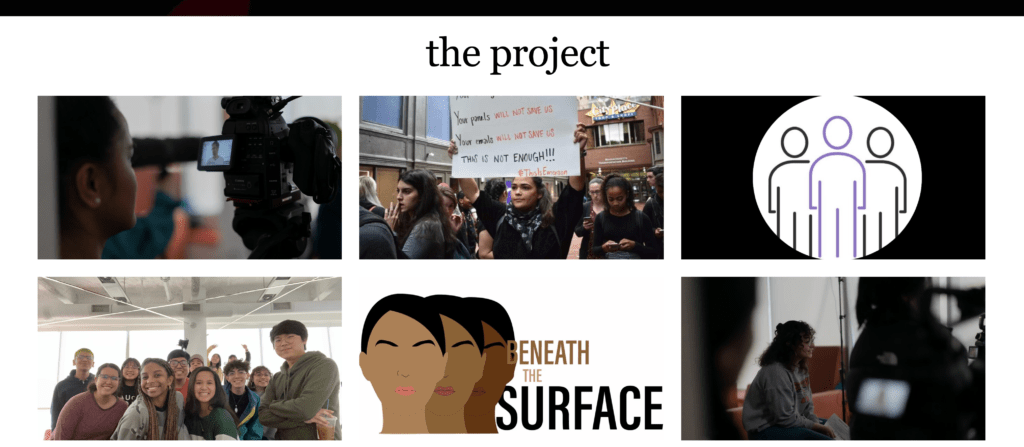
By Molly Loughman
Through the first half of the Spring 2020 semester, students in the Journalism course TV News Magazine and Documentary had been developing short documentaries on subjects related to social change. But when production was disrupted by COVID-19 restrictions, they, along with Assistant Professor Gino Canella, saw the opportunity to expand their projects into multimedia websites, with deeply satisfying results.
Journalism major Emily Cristobal ‘20 had planned to produce a documentary about race on Emerson’s campus. A first-generation college student from a Filipino family, Cristobal began wondering, in her sophomore year, about the mental health effects for students of color at a predominantly white institution. Through both the documentary and its website counterpart, Beneath the Surface, Cristobal established a platform to support students of color and explore the daily impacts of microaggressions, anxiety, and outward racism.
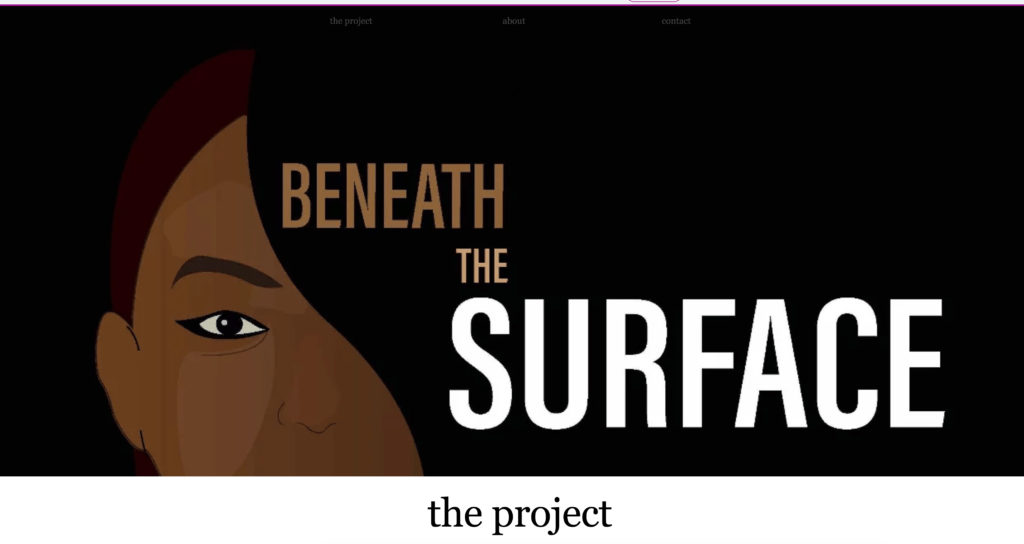
“We hope by viewing Beneath the Surface, people will be open to having productive conversations about race, question their biases, learn to be conscious of their daily actions, and most importantly, respect all people no matter their background,” said Cristobal. “We hope this project will be a resource long after we’ve left Emerson, and that positive conversations about race and diversity will continue and result in real change.”
The four other 8-12-minute short documentaries in the class cover a range of topics: service dogs for veterans and the physically challenged; college students and online dating; climate change in Boston; and haunted locations in Boston. After classes went remote in March due to COVID-19, the five short films were adapted into multimedia documentary websites with interactive layout designs and features, photo galleries, and short videos.
Canella initially designed the TV News Magazine and Documentary course to teach students the technical and conceptual skills for producing documentaries, and to understand how they fit in the broader journalism field. Expanding the projects to multimedia websites gave students the chance to study and practice the combinations of written communication, interactive layout designs, photo galleries, and short videos.
As a media researcher, instructor, and award-winning documentary filmmaker and journalist, Canella explained that feature-length documentaries often use websites and social media as a promotional tool to direct viewers to screenings and to boost distribution by showcasing the film trailer, behind-the-scenes photos and clips. In the case of this class, he said, the websites required to think of different ways to tell their stories.
“It’s how you think about design decisions when creating different sections of the [online] story and how people may or may not move throughout the story — and what that does to reinforce the narrative — and each piece of media has its own mini story,” Canella said.
Towards the end of the semester, students tested their drafted websites on each other to observe the user experience and feedback to help them improve content engagement.
“I’m thankful that all my Emerson professors have used their creativity to help us succeed and continue to learn after the transition online,” said Samantha Woolf ’20, who produced Climate in the City. “In my experience they have been understanding, supportive, and very communicative. I think it goes to show how a school built on creative expression and knowledge can thrive in difficult situations.”
Beneath the Surface
Stories of students of color at Emerson College:
“From diversity training in orgs to just experiencing microaggressions and white peers just not understanding my experience and the experiences of other minorities on campus just made me so frustrated. And I thought the best way to show how we are feeling is by actually interviewing students from Emerson and sharing our narratives.”
— Emily Cristobal ’20, journalism major
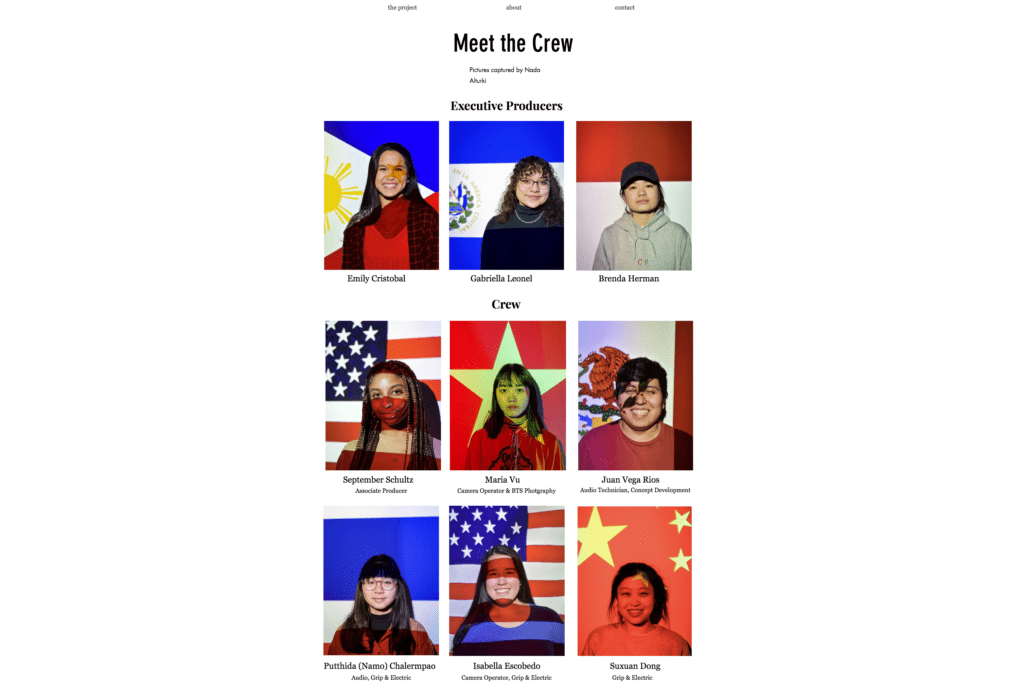
Should I Swipe Right?
College students and online dating:
“We want to educate those who are unfamiliar with the online dating community and how it works. However, we also want to remind people that sometimes dates aren’t a fairytale and it can be hard to find a significant other. That’s normal. ‘You are not alone’ is one of the messages. Everyone has a different experience using dating apps, but there’s always common ground between users. We focused on safety, catfishing and stigmas, but we also talked about happy couples, success stories and learning experiences. There is truly something for anyone… Documentaries have the stigma of being really serious or sad. Online dating, on the other hand, can be quite the opposite. We were able to share a plethora of stories; some funny and others more cautious.”
— Alessandra Guarneri ’20, journalism major/public relations minor
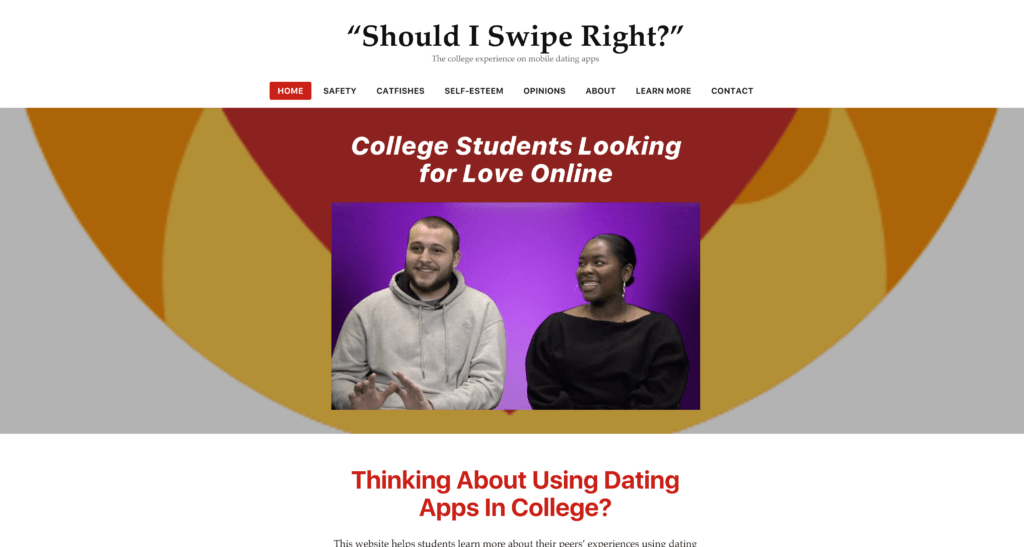
Climate in the City
How Boston is being affected by climate change:
“Boston’s location makes it incredibly vulnerable to flooding from rising sea levels linked to global warming. Many places have been able to engineer ways to protect buildings for when it happens, but many vulnerable communities cannot afford to make those same changes.. I hope viewers of our documentary and website will understand the urgency of the climate situation. I hope people use the resources we provided and seek out the organizations we listed to help make a difference. I also want them to see that there is hope for Boston! The scientists we spoke to shared steps everyone can take to make a difference in Boston’s fight against climate change.”
— Samantha Woolf ’20, journalism major
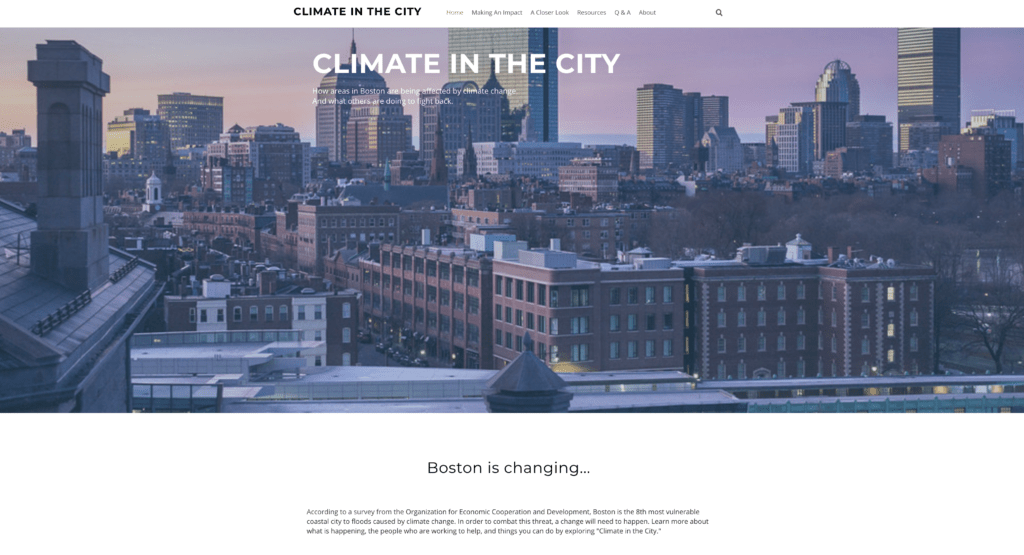
The Service Dogs Project
Great Danes are trained to assist veterans and people with mobility issues:
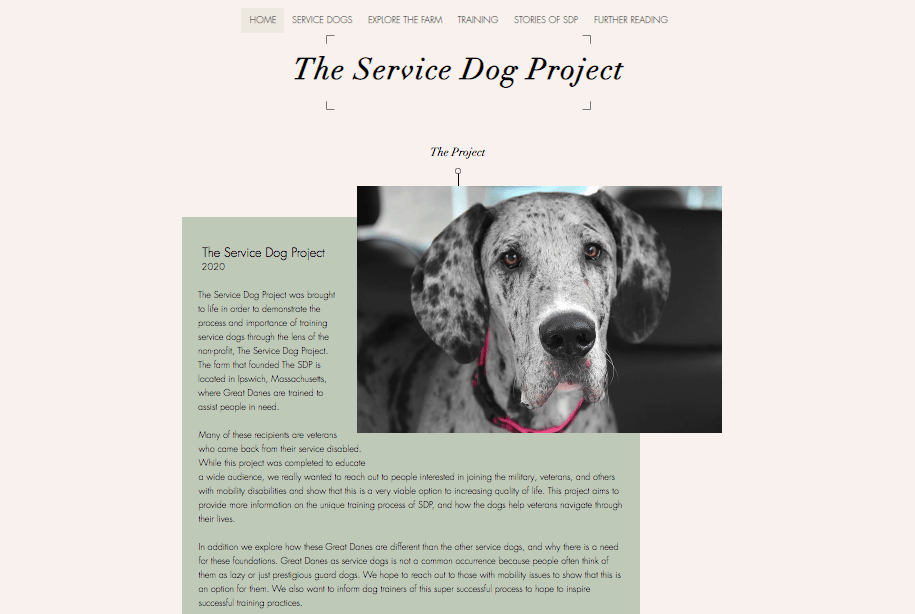
Haunted Horrors of Boston
Explores haunted locations of Boston:
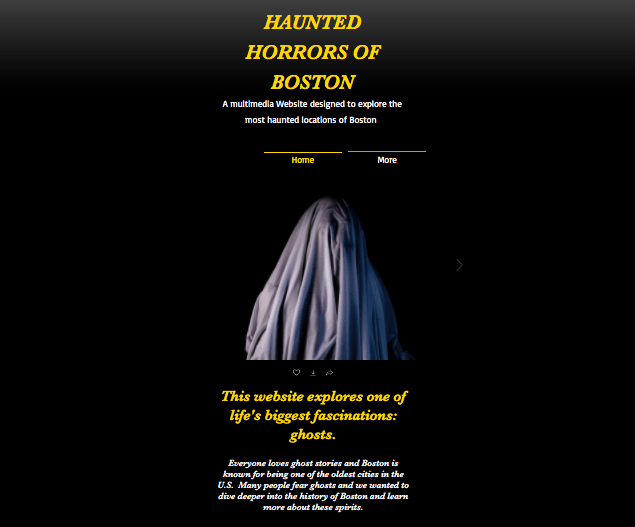
Categories